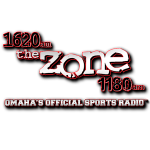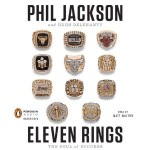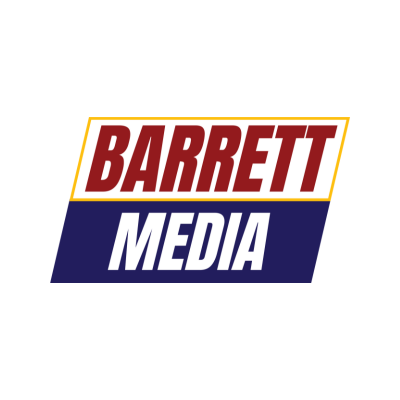The third installment of our exclusive column series from different members of the sports media takes us this week to Omaha, Nebraska. Our featured writer is Dave Tepper who currently holds the title of Operations Manager for NRG Media.
 In his current role, Dave oversees two sports stations (1180 The Zone and 1620 The Zone) and a News/Talker, the Mighty 1290 KOIL. Omaha is a far cry from Southern California which is where he was born and raised. It’s also different from Houston where he spent the previous seven years of his career. That said, it’s an incredible place and one of America’s true hidden gems. If you haven’t experienced it before I highly recommend it.
In his current role, Dave oversees two sports stations (1180 The Zone and 1620 The Zone) and a News/Talker, the Mighty 1290 KOIL. Omaha is a far cry from Southern California which is where he was born and raised. It’s also different from Houston where he spent the previous seven years of his career. That said, it’s an incredible place and one of America’s true hidden gems. If you haven’t experienced it before I highly recommend it.
Having listened to The Zone’s programming, I can tell you that the station’s commitment to doing high quality content is very much the same as what you’d hear from a major market operation. That’s a testament to the approach NRG Media has taken to hire talented people, and provide them with a programmer like Dave who has a real passion for coaching.
When you work in this business as long as I have, you get to know a lot of people. Although Dave and I haven’t worked together, we’ve known each other for years, and there’s always been mutual respect. When we connected to talk about this project, I knew he’d come up with an interesting subject for people to think about, and he certainly didn’t disappoint.
The focus of this column is a subject that is easy to lose sight of during a show – how to best use your free time during a commercial break.
When a talk show is in full swing, we take for granted what goes on during those couple of minutes of free time. However, the momentum of a show can be improved or crushed depending on how that time is utilized. As you’ll learn from Dave, there are ways to assure success, but it requires focus and eliminating key distractions that can negatively impact everyone inside the studio.
The Do’s and Don’ts During Commercial Breaks
Enjoy the silence. Yes, the engaging sound of strong opinions and lively entertainment filling the airwaves is the goal. At the same time, how the breaks between talk segments are spent can greatly affect programming quality. Most shows spend approximately 12-15 minutes an hour in break, about 25% of the show time. If you’re a Program Director that hasn’t considered your station’s show use of break time, it may be something to talk about with your team.
 What communication happens- or doesn’t happen- in those short break minutes can have a significant impact on the segments to come. After spending the majority of my career on-air, and not always being productive with this time, this is something I realized can greatly impact a show. The successful shows that I’ve been a part of minimize chatter during this time. Being on-air is mentally challenging so taking a time-out with limited communication is incredibly effective at keeping content, focus and reactions natural and fresh.
What communication happens- or doesn’t happen- in those short break minutes can have a significant impact on the segments to come. After spending the majority of my career on-air, and not always being productive with this time, this is something I realized can greatly impact a show. The successful shows that I’ve been a part of minimize chatter during this time. Being on-air is mentally challenging so taking a time-out with limited communication is incredibly effective at keeping content, focus and reactions natural and fresh.
A number of things in a break can throw off a segment. Here are a few examples:
- Hosts continue a good debate or discussion during breaks, thereby not saving it for the air, are wasting natural emotion, material and spontaneous reaction that’s best shared fresh to the audience LIVE.
- Producers that make a habit of utilizing breaks to add their opinion on the subject, which drains the fresh conversation and also the hosts.
- Checking personal emails, texts, and other forms of communication not related to the show during breaks can quickly derail the show flow and focus.
- Reading social media listener feedback can be a momentum buster, and most hosts are much more sensitive to this than they lead on.
On the other hand, productive break choices that set up a segment for success include:
- Hosts researching story updates or new topics that spontaneously come up in the show.
- Take inventory of where the show has been and where it’s going.
- Producers searching for audio from an earlier show moment or related to an upcoming topic, lining up a guest or screening callers.
- My favorite use of break time is silence. Some of the best segments I’ve been a part of or heard, followed quiet breaks where show members were simply focused on what was happening within the show at that present time.
I’m not suggesting on-air teams will always behave like this or that the studio should be golf-course-quiet during breaks, but a few moments to acknowledge how the time is used is valuable. Much attention is spent on the on-air content, pace and energy, but it’s worth encouraging programming staff to also find quiet moments and to use break time wisely. It can benefit the stamina, flow and energy of a show.
 Ultimately choosing this discipline is up to each show member, but I believe that Program Directors should take time communicating the importance of how ALL show time is spent, including breaks. In Phil Jackson’s latest book “Eleven Rings” he quotes a jazz musician’s advice to his team, and one quote that stood out is; “What you don’t play can be more important than what you do”.
Ultimately choosing this discipline is up to each show member, but I believe that Program Directors should take time communicating the importance of how ALL show time is spent, including breaks. In Phil Jackson’s latest book “Eleven Rings” he quotes a jazz musician’s advice to his team, and one quote that stood out is; “What you don’t play can be more important than what you do”.
Similarly, what our radio teams don’t do can be just as important as what they do.
Dave Tepper is the Operations Manager for NRG Media in Omaha, Nebraska. He’s also been a Program Director, On-Air Host and Producer. His career stops include ESPN 97.5 in Houston, The Big 1530 ESPN Radio in Austin, and 97.1 KLSX and KABC 790 in Los Angeles. Reach him on Twitter by clicking here. Reach him on Facebook by clicking here.






